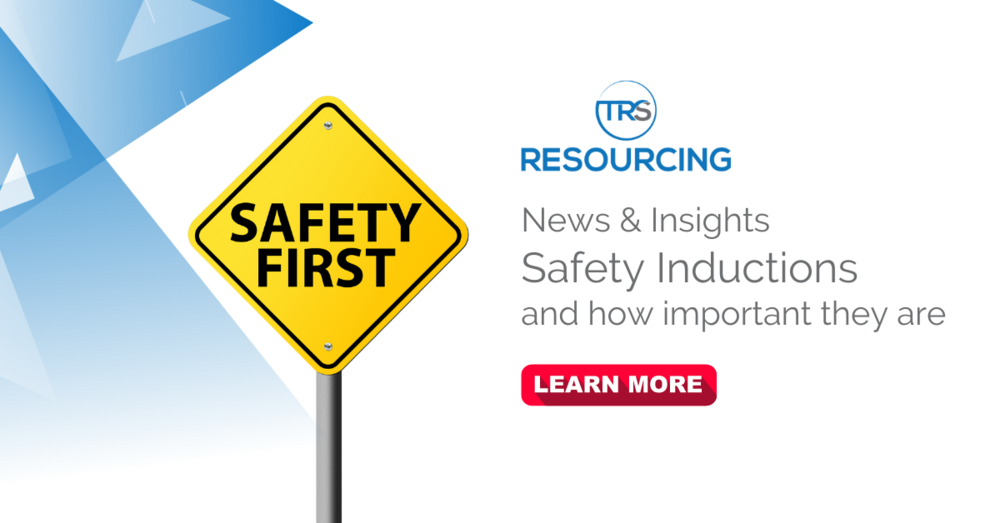The Importance of Safety Inductions
The Importance of Safety Inductions Safety inductions are integral to any workplace, especially in the current climate. An induction allows employers and job applicants to collaborate on understanding company policies and procedures. It reduces the risk of accidents and ensures a safe work environment. It serves as an introduction to working practices and encourages communication…

The Importance of Safety Inductions
Safety inductions are integral to any workplace, especially in the current climate. An induction allows employers and job applicants to collaborate on understanding company policies and procedures. It reduces the risk of accidents and ensures a safe work environment. It serves as an introduction to working practices and encourages communication between employers, job applicants and businesses.
For these reasons, we must discuss the key benefits of safety inductions, so there is good decision-making for employers to ensure they support their staff in achieving success within their business.
Understand the importance of Safety Inductions – what they involve and their purpose.
Conducting safety procedures is an important component of Safety in the workplace to ensure a healthy and safe work environment. Specific inductions must take place to equip individuals with the necessary skills, knowledge and understanding of workplace hazards, WHS policies and procedures, including the need for personal protective equipment (PPE).
By providing induction training, organisations can create an environment where Safety is integrated into all processes and remains at the forefront of everyday operations.
Additionally, safety induction ensures that employees respect safety rules from the outset and reduce potential health and safety risks within the working environment.
Decide on which safety induction process to use in your business
When deciding which safety induction process to use in your business, it is essential to assess your organisation’s needs and ensure that they are supported.
Consider potential risks, the size of your team, the type of work you are doing, and how often new employees or visitors will be on site. It would help if you also considered incorporating automation into your safety process; this can reduce some of the administrative burden associated with management and updates, enabling you to manage Safety more efficiently. Evaluating your options will help you choose a safety induction process that suits your organisation’s needs.
Identify who should be responsible for conducting safety inductions.
An organisation’s safety procedures need to be closely monitored and adhered to. Fortunately, conducting safety inductions can help ensure that all employees are up-to-date on the measures they must take while in the workplace. Therefore, someone within the organisation must conduct high-quality safety inductions that cover the relevant areas and prepare staff for any potential hazards. Ultimately, this will create a safe working environment and allow your business to improve its standards of safety protocols.
Prepare the necessary materials and information needed for the safety induction.
To provide the most comprehensive safety inductions possible, it is vital to ensure that all necessary materials and information are on hand. These may include written materials such as:
Manuals or handouts which cover risks and rules of Safety standards applicable to the current environment and the equipment or machinery that needs special attention and instruction for use.
Contemporary forms of learning, such as computer-based instructions or software programs containing protocols for those working in hazardous areas.
Preparing these beforehand helps make the induction process smooth and efficient while providing a complete understanding of what is expected during the induction program.
What are the WHS Induction benefits for Employers?
Employers stand to benefit significantly by introducing induction training for their workers. The safety regulations and protocols outlined in WHS induction help ensure that all employees know safe working practices, reducing the risk of injury or illness while onsite.
An Employer will benefit from enhanced productivity resulting from reduced downtime due to accidents, improved communication between different teams, and increased employee morale stemming from a demonstrated commitment to health and Safety.
Finally, employers may benefit financially through workplace insurance premiums and other workplace injuries or fatalities costs. Induction training is a cost-effective way for employers to optimise the performance of their workforce while meeting legal obligations mandated by state laws.
What are the WHS Induction benefits for Job Applicants?
For job seekers, induction training provides multiple benefits. It’s a powerful tool to ensure you know the relevant policies and regulations related to WHS.
Equipping yourself with induction knowledge will help you stress less during the job interview, as you will already know the different safety protocols associated with the workplace.
The benefits offered with induction training can also prove beneficial for job seekers since it is usually provided free of charge and makes your resume stand out from a sea of competitors by giving off an impression that you are responsible and adhere to codes and regulations better.
Safety Inductions are an essential part of the employment process and should be taken seriously by employers and job applicants. Understanding what they involve, deciding which approach to use, assigning responsibility for conducting them, preparing the necessary materials and information needed, and recognising the benefits of safety inductions can ensure that both employer and employee alike comply with WHS regulations. Read more by TRS on “How do you measure your safety?”
Furthermore, it can promote a safe working environment and increase knowledge retention. As this blog post has highlighted, why having induction training is important. These steps are critical to achieving positive worker health outcomes for everyone involved. Consequently, if you are an employer seeking guidance for your own WHS induction training programme, you should enquire how TRS Resourcing conduct its onboarding so you can start creating that safe working environment from day one.
At TRS Resourcing, we’ve taken a giant leap forward in safety! With our years of use with Workpro-powered inductions and dedicated onsite Safety auditors, candidate job readiness is achieved quickly without sacrificing quality. Plus, with automated screening, eLearning and ongoing compliance monitoring wrapped up into one dashboard – the future of safety with TRS Resourcing is brighter (and Safer) than ever!
Find your Industry here on the https://www.safeworkaustralia.gov.au website.
Read more FAQ about Safety in the Workplace here:
https://www.trsresourcing.com/uncategorised/the-importance-of-safety-inductions-in-the-workplace-faqs/
Have a question? Ask us below, and a TRS team member will respond ASAP.

Contact TRS here and ask about our Safety Inductions and Compliance Procedures
